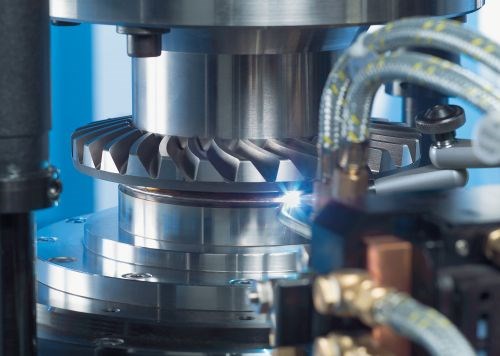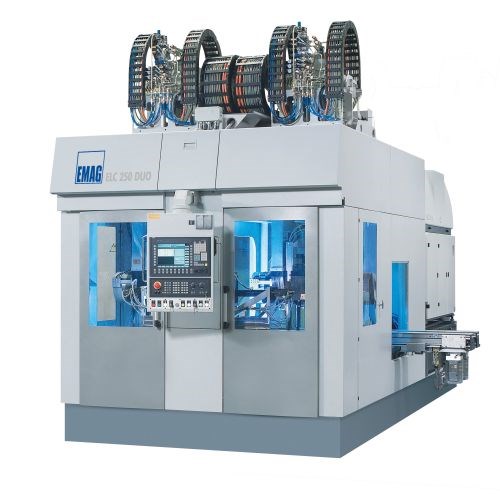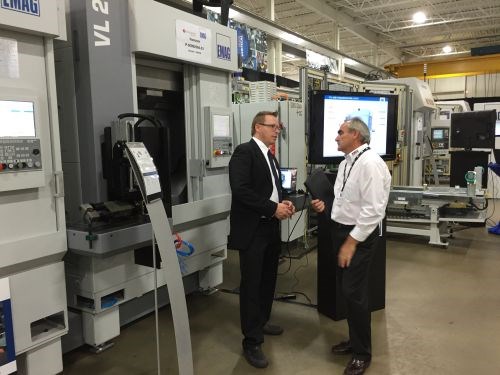Launching a Laser Welding Lab
Emag recently opened this new lab in the heart of automotive manufacturing country, providing its customers consultation on a variety of related subjects and providing a space for research collaborations.
Share




Hwacheon Machinery America, Inc.
Featured Content
View More
.png;maxWidth=45)
DMG MORI - Cincinnati
Featured Content
View More

Takumi USA
Featured Content
View More

Emag celebrated the launch of its new Laser Welding Laboratory June 8 at its U.S. headquarters in Farmington Hills, Michigan, spotlighting the ELC 250 Duo compact laser welding system.
Emag hosted an open house along with the launch of its new Laser Welding Laboratory June 8 at its U.S. headquarters in Farmington Hills, Michigan. The event was an opportunity for the company’s customers, representatives and distributors to witness live equipment demonstrations along with technical presentations made by Emag executives and members of other industry groups.
The centerpiece of the new lab is the ELC 250 Duo compact laser welding system for machining gear components. This twin-spindle, two-station machine allows for loading and unloading the spindles during the cycle. Primarily targeting the automotive industry, the lab will provide services including weld-seam-design consultation, pre-turning and weld-prototype support, among others.

The ELC 250 Duo compact laser welding system is a twin-spindle, two-station machine for manufacturing gear components.
In addition to the ELC 250 Duo, live demonstrations were conducted on the VL 2 and VL 4 vertical modular turning machines, offering high production performance and featuring integrated automation and space-saving vertical lathes. Demos were also performed on the VT 2-4 and VT 4-4 machines for shaft production with high-speed loading and unloading processes.

Jeff Moore, regional sales manager at Emag, discusses the capabilities of the VL 2 vertical modular turning machines with an Open House attendee.re.
Peter Loetzner, CEO of Emag LLC, made opening remarks, followed by Andreas Mootz, managing director of Emag Automation, Jens Standfuss, with Fraunhofer, and Achim Feinauer, COO of the Emag Group.
Pat McGibbon—vice president of strategic analytics at AMT–The Association For Manufacturing Technology—spoke on “The Manufacturing Economy 2016 and Beyond.” He listed the primary challenges to the U.S. manufacturing technology market as taxes and slowdowns in the automotive and energy sectors. As for the path of trends in manufacturing technology, he cited Oxford Economics, which expects "a decline of 1.2 percentage points but a big finish to the year," ITR Economics, which sees a “rise in demand coming—be ready,” and Steven Kline, director of market intelligence at Gardner Business Media, who says “the downturn in manufacturing technology orders is average—both in duration and depth.”
Related Content
-
Lean Approach to Automated Machine Tending Delivers Quicker Paths to Success
Almost any shop can automate at least some of its production, even in low-volume, high-mix applications. The key to getting started is finding the simplest solutions that fit your requirements. It helps to work with an automation partner that understands your needs.
-
Quick-Change Tool Heads Reduce Setup on Swiss-Type Turning Centers
This new quick-change tooling system enables shops to get more production from their Swiss turning centers through reduced tool setup time and matches the performance of a solid tool.
-
Orthopedic Event Discusses Manufacturing Strategies
At the seminar, representatives from multiple companies discussed strategies for making orthopedic devices accurately and efficiently.




.png;maxWidth=150)
































